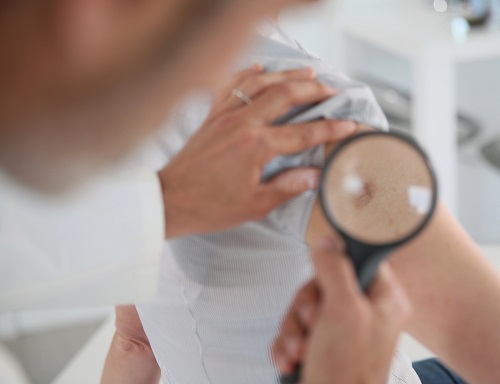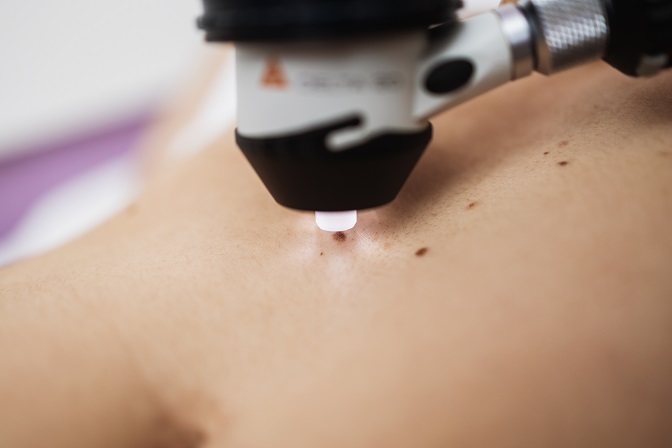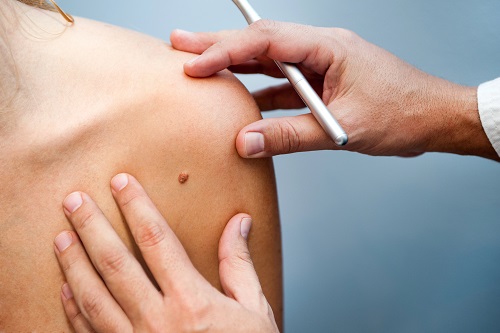About Skin Checks
What happens at
a skin check?
A skin check is a head to toes skin examination using eyes alone and then the dermatoscope, a skin microscope that allows use to look at the top layer of skin more fully.
Like any other consultation we will ask some history questions to assess your skin risk – have you had a previous skin cancer, is work or hobbies in the sun, do you tan or burn, is there a family history of skin cancer. We will ask you what specific spots you or a partner have noticed or want checked.
Then we will ask your consent to examine the skin.
We ask you to attend in shoes/slides that are easy to kick off, two piece outfits that are easy to remove, a bra that does not cover large areas of the back for women. A watch that is easy to remove, minimal jewellery please, particularly avoid large bangles and necklaces.
We examine the tops of ears, scalp, temple, scalp, face. We will examine up one arm, over shoulders, back, other arm, palms, abdomen. We will look at nails. We will ask if there are any spots hidden by a bra you want examined. We will then put the top back on.
We will examine each leg and ask you to twirl to look at both legs. We will examine both soles of the feet for a rare but difficult type of skin cancer that can develop there. We’ll ask if there any spots covered by underwear you want examined but don’t routinely take underwear off.
We then may return to any suspicious or abnormal skin spots and measure, photograph and decide on any action needed:
- Follow up with repeat skin examination, in 6 weeks
- Perform a skin biopsy – numbing the skin and taking a small amount for diagnosis
- Go straight to complete removal if quite suspicious for skin cancer
We will write a plan to discuss.

What are we looking for at a skin check?
As our largest and most visible organ, the skin is ideal for early detection and treatment of skin cancers. We also know people living in Australia are at high risk for skin cancers. The earlier and the smaller a skin cancer is, the easier it is to deal with and this also reduces the risk of the skin cancer spreading.
We want to know about any changes you or a partner have noticed in the skin. Has there been growing spots, a new spot, itching, bleeding from a skin spot?

Who should have a
skin check?
People with a history of skin cancers, high sun exposure, including burning as a child, burning rather than tanning skin types, light or red hair types and history of melanoma in a first degree relative. These guidelines are set out in the Royal Australian College of General Practice preventative health book.
For people in these risk groups, they should have as needed skin checks and examintion of new or changing spots. People at higher risk are those who have already had a skin cancer, or having immunosuppression for an organ transplant. They should have skin examination regularly every 12months.

